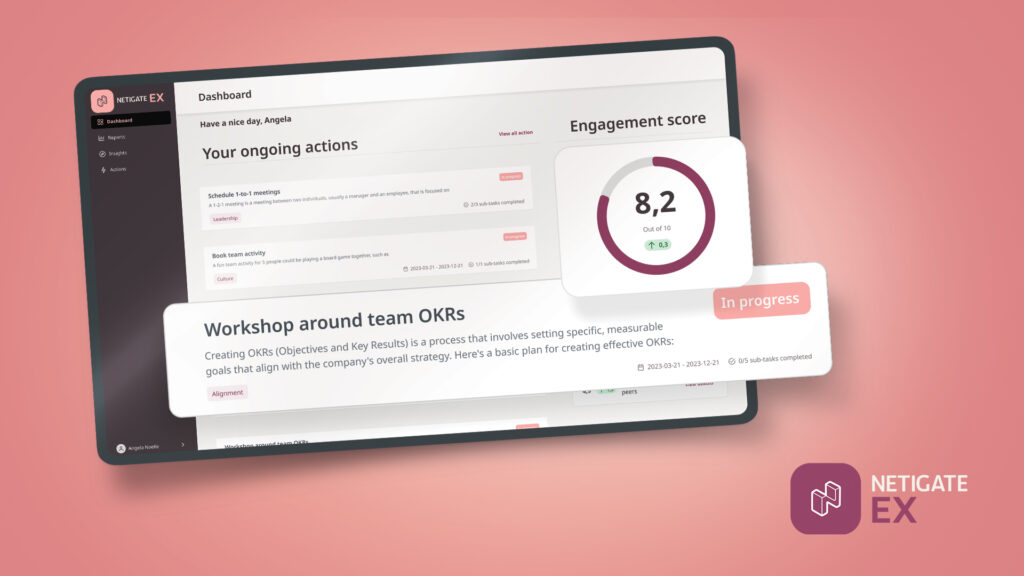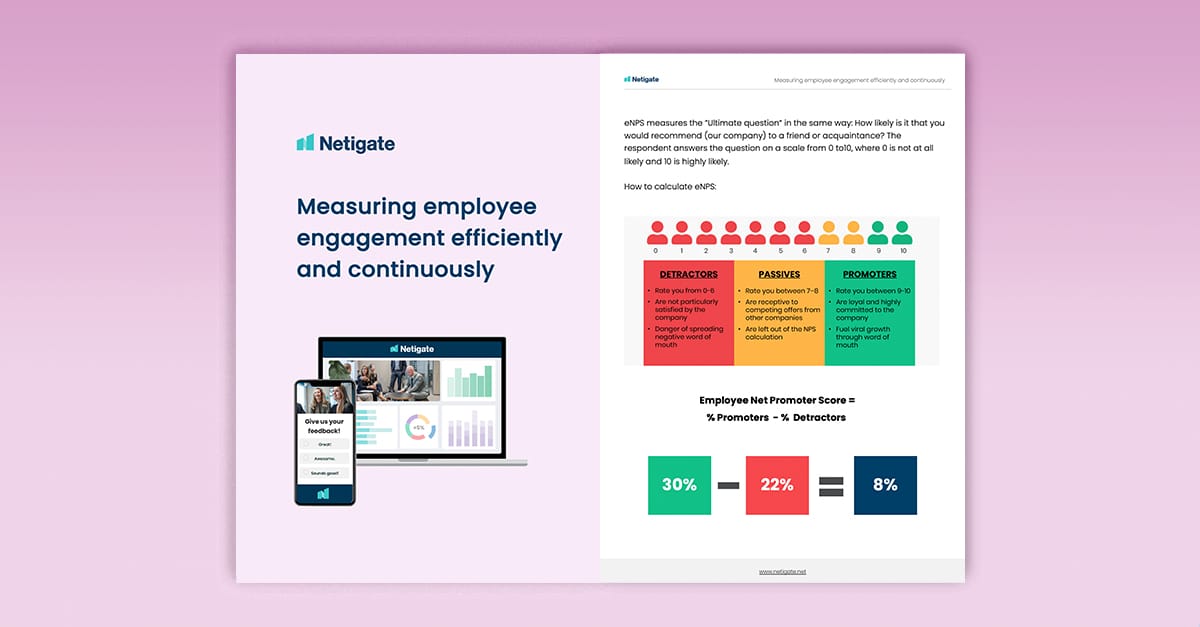The employee journey plays an integral role in sculpting and enriching the overall employee experience. When creating an effective employee journey map, it is evident that surveys are indispensable — particularly in deciphering pivotal touch points that directly influence employee retention.

Definition of the employee journey map
An employee journey map is a visual representation that outlines the various stages and touch points an employee encounters throughout their tenure within an organisation. It represents the complete lifecycle of an employee, starting from the initial stages of recruitment, onboarding, continuous development, potential transitions or promotions, to the eventual exit or career progression.
For an HR expert, employing surveys at different touch points along this journey is akin to placing strategic checkpoints to gather valuable insights and feedback. This is because these surveys act as navigational tools. They provide a comprehensive understanding of employee experiences, sentiments, pain points, and satisfaction levels at pivotal junctures.
By strategically deploying employee surveys, HR professionals can gain in-depth perspectives and identify areas for improvement. Moreover, you can tailor interventions to enhance the overall employee experience.
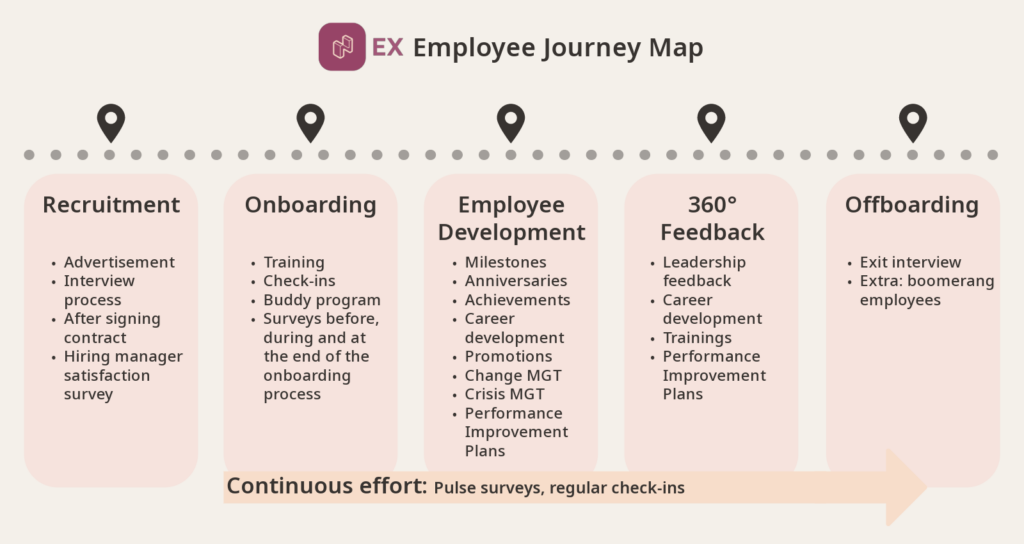
For example, surveys conducted during recruitment aid in refining hiring processes, while onboarding surveys facilitate smoother transitions. Furthermore, employee development surveys offer insights into skills and growth needs. In addition, 360° feedback evaluates leadership qualities, and exit interviews uncover reasons behind departures.
Collectively, these surveys empower you to make informed decisions, design targeted strategies, and help you nurture a positive working environment.
Employee journey touch points explored through event-based surveys
Employee journey mapping through various surveys, including onboarding, exit interviews, and 360° feedback, plays a pivotal role in capturing significant touch points along an employee’s journey. Therefore, these surveys not only fine-tune integration but also provide insights that are crucial for retaining talent.
Survey overview for the employee journey stages
- Recruitment questionnaire: Shaping a positive candidate experience, refining the hiring process.
- Onboarding survey: Tailoring onboarding experiences for seamless transitions.
- Employee development survey: Assessing skills, guiding growth, and identifying training needs.
- 360° feedback: Evaluating leadership qualities, fostering engagement and satisfaction.
- Exit interview: Uncovering departure reasons to address underlying issues.
Each of these survey types serves as a valuable tool in understanding different stages of an employee’s tenure. And thus, will play a significant role in contributing to their experience within the organisation.
Integrating surveys into the employee journey: A strategic approach
Their strategic placement within the employee journey map serves as a comprehensive guide. By illuminating areas of improvement and facilitating proactive measures, they boost employee satisfaction and retention.
Through these employee surveys intricately woven into the employee journey map, you will be able navigate the landscape of employee experiences. For instance, you will be able to identify critical touch points that ultimately shape a more engaging, supportive, and appreciative work environment.
Now, let’s take a look at the various touch point (or pit stops) of the employee journey:
1st stop: Recruitment questionnaire
Surveys conducted during recruitment serve as crucial tools in refining the hiring process. They certainly are able to sculpt a positive candidate experience. Therefore, it marks an important beginning point of the employee journey.
Recruitment questionnaires not only enhance the candidate experience but also provide invaluable insights to shape a more effective and appealing recruitment strategy.
As you proceed, consider boosting your employer brand every step of the way: utilising platforms such as Glassdoor or Indeed will aid you in the long run. Not only will you gain more visibility, but also because you will ensure your brand maintains a positive reputation, gains a competitive edge, and continues to attract top talent consistently.
Benefits of a recruitment questionnaire
- Gather preferences regarding job aspects like location, compensation, and responsibilities.
- Acquire market insights and monitor recruitment progress.
- Measure satisfaction levels of hiring managers for informed decision-making.
More on recruitment questionnaires — Unlocking the benefits of survey-based recruitment
2nd stop: Onboarding survey
Investing in comprehensive onboarding processes as the second stop in your employee journey map alongside targeted onboarding surveys yields insights that significantly benefit team productivity and employee retention. Leveraging onboarding surveys doesn’t just smoothen new hires’ transitions; it also nurtures a positive work environment right from the beginning. Thus, you are consistently working towards ensuring long-term employee commitment.
Advantages of an onboarding survey
- Reduction in HR expenses and enhanced productivity.
- Improvement in employee satisfaction and loyalty.
- Refinement of onboarding processes leading to better outcomes.
For more details on onboarding surveys, we recommend:
- How investing in employee onboarding helps employees thrive
- Guidelines for Successful Employee Onboarding Survey
- How a better onboarding program can reduce employee turnover
3rd stop: Employee development
Employee development evaluations as an important middle part of your employee journey with structured training plans help you show your dedication to nurturing growth. This in turn will aid you with building trust within the workforce.
In essence, employee development surveys serve as catalysts, not just for individual growth but also for actively building a culture of continuous improvement within the organisation.
Elements of an employee development survey
- Skills assessment: reviewing technical, soft, and leadership skills.
- Performance evaluation: acknowledging past achievements and identifying areas needing improvement.
- Feedback from peers/managers: gathering diverse perspectives on contributions.
- Career aspirations discussion: aligning personal goals with organisational objectives.
- Identification of training needs: addressing skill gaps effectively.
- Personal development plan: collaboratively outlining a roadmap for career advancement.
Depending on your organisation and its scale, you may want to focus on training leaders to pass on knowledge and skills to their team members.
Download this eBook — 10 tips on how online surveys can help you to become a better HR manager
4th stop: 360° feedback
360° feedback plays a crucial role in the employee journey map by identifying leadership strengths, weaknesses, and areas for improvement. Above all, these 360° reviews are directly contributing to heightened employee satisfaction and engagement. Integrating 360° feedback fosters a more robust leadership framework. As a result, properly trained and well supported leadership will positively impact organisational culture and employee motivation.
Advantages of 360° feedback
- Comprehensive assessment of leadership qualities.
- Targeted development plans crafted for leaders.
- Enhanced overall employee satisfaction and engagement levels.
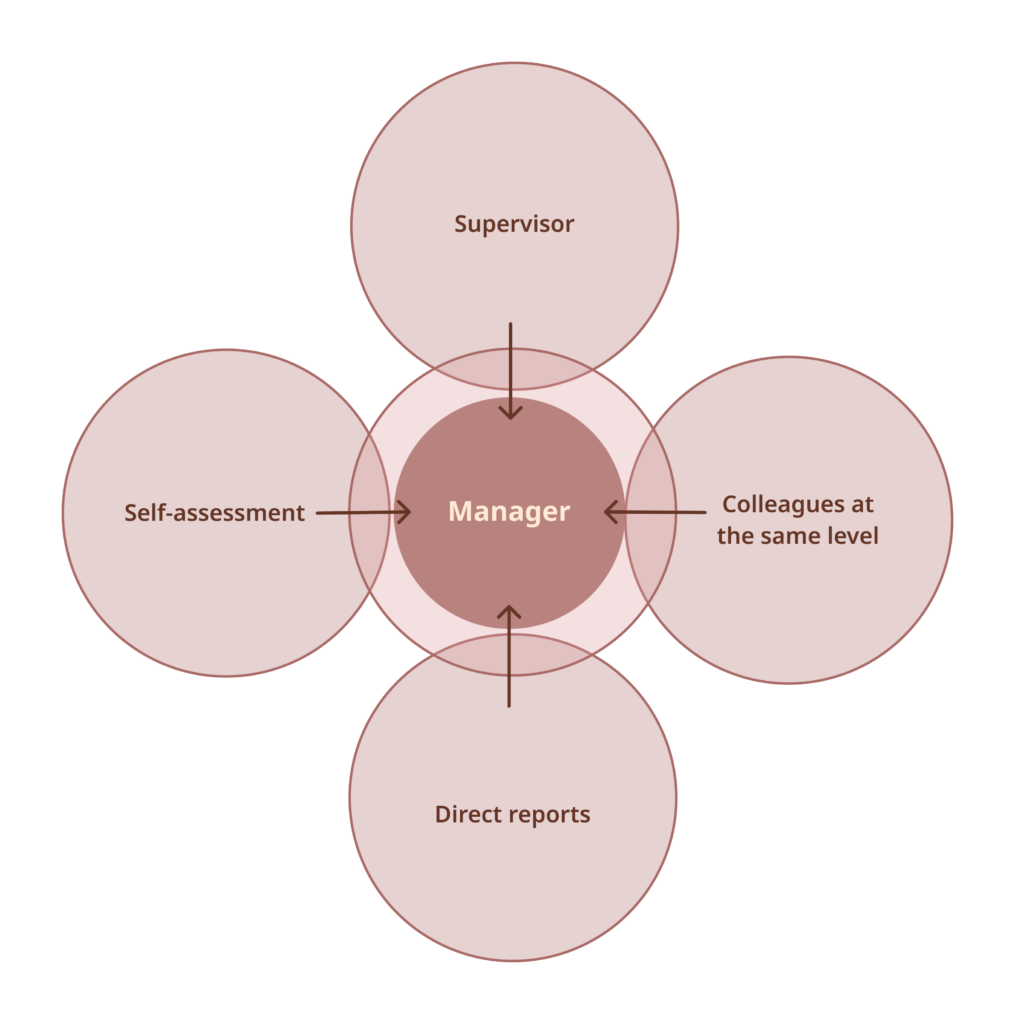
We recommend these resources for a deep-dive into 360° feedback:
- article: How to work with 360 degree feedback: Definition, variations, and advantages
- ebook: 360-degree feedback: Why leadership feedback matters
- article: 360 degree feedback example questions
- Netigate Consulting offer: Netigate 360° Leadership Feedback
5th stop: Exit interviews
Exit interviews serve as vital sources of feedback to improve employee retention and elevate the overall employee experience. Oftentimes exit interviews are neglected as the final stop of an employee journey map, however, its benefits cannot be understated. Learning from why some employees choose to leave can help you retain the other employees.
Significance of exit interviews
- Proactive identification of issues and subsequent implementation of corrective measures.
- Encouragement of honesty and transparency for valuable insights.
- Appreciation shown to departing and remaining employees in pursuit of continuous improvement.
Utilising exit interviews isn’t just about farewells; it’s a strategic approach towards learning from departures. For example, they aid you in ensuring lasting improvements, and acknowledging the value of every employee’s experience.
The boomerang effect: reconsidering former employees’ return
Boomerang employees, those who return after leaving, offer advantages if their exit was amicable. Moreover, their familiarity speeds up onboarding and brings in fresh perspectives. But it’s not always a seamless return as both parties evolve.
Deciding to rehire isn’t simple. Consider the following:
- Exit amicability: How was their departure handled?
- Past impact: What was their contribution before leaving?
- Changed circumstances: Have the reasons for leaving changed?
- New skills: Have they acquired new skills that could benefit the company?
Tailored approaches for each case are crucial. This is why feedback strategies can provide insights for better rehiring decisions.
In conclusion, recognising the importance of exit interviews, regardless of whether an employee returns as a boomerang employee or not, shows appreciation for both departing and remaining employees.
We recommend this article for further reading — What to ask in an employee exit interview?
How to create your employee journey map?
Employee journey mapping involves various techniques to visualise and understand the employee experience across different touch points within an organisation.
Start by visualising the employee journey on a timeline or flowchart. Afterwards, highlight touch points, emotions, interactions, and pain points at each stage. This will help you in understanding the holistic journey.
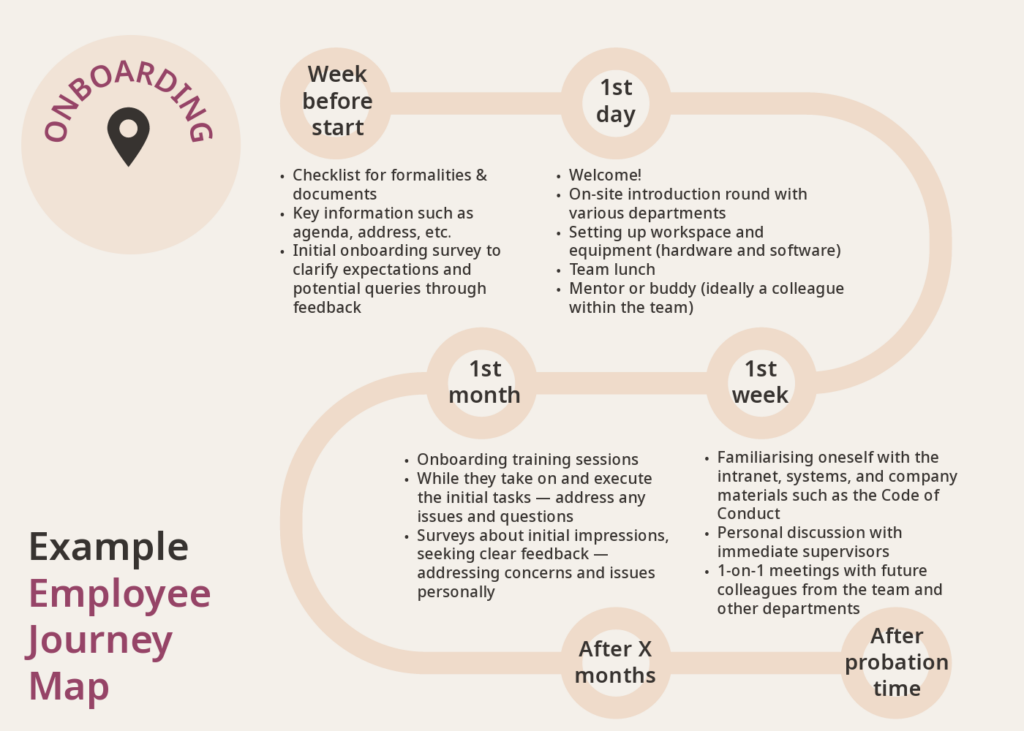
You can even think about doing this together in a team involving stakeholders, including employees, managers, and other HR professionals, in workshops or co-creation sessions. Collaboratively map the employee journey by incorporating diverse perspectives.
You could even think about creating personas of employees based on demographics, roles, goals, and pain points. This might help you in understanding different employee needs and behaviours.
If you already have employed the help of surveys before, then think about all the data you already have at your disposal. This will allow you to strengthen your employee journey map with actual data.
How survey data can improve your whole employee journey
So, let’s say, you have mapped out your whole journey and strategically placed your employee surveys exactly at each touchpoint — now what? We, at Netigate, we always preach that we don’t encourage surveys for the sake of having done them. This doesn’t benefit anyone and only wastes resources (obviously). This is why utilising the power of data insights extracted from employee surveys holds unparalleled significance.
Through meticulous analysis, these insights unveil a gold mine of information. They provide you with a profound understanding of employee sentiments, preferences, and pain points across various touch points in their journey. These invaluable data “nuggets” empower you to make informed, strategic decisions.
By deciphering trends, patterns, and correlations within the survey data, organisations gain a compass to navigate towards targeted interventions and improvements. This data-driven approach not only enhances employee engagement and satisfaction but also enables proactive measures to address specific challenges and amplify strengths within the workforce.
With actionable insights from surveys, organisations can refine processes and tailor experiences. As a result, they enable you to work towards a workplace culture with your employees’ needs at the center that thrives on continual improvement.
Conclusion — a well-rounded employee journey map
When it comes to developing a robust employee journey map, employee surveys are indispensable instruments. This is especially true for identifying critical touch points that significantly impact employee retention. These employee surveys, strategically placed at different junctures of the employee journey, serve as compasses. In other words, they guide organisations towards understanding and enhancing the employee experience.
By deploying specific surveys such as recruitment questionnaires, onboarding assessments, employee development evaluations, and exit interviews, companies gain profound insights into the nuanced needs and expectations of their workforce at every stage. These touch point or event-based surveys not only reveal the factors that attract top talent during recruitment but also ensure a seamless onboarding experience, nurturing employee growth through targeted development strategies, and comprehensively evaluating the reasons behind employee departures.
After all, constantly striving to enhance the overall employee experience involves a continuous effort to improve employee retention — even in the face of employee departures. Balancing the insights from these surveys is key to shaping a journey that not only retains talent but also propels the organisation towards continual growth and success.
However, please note that continuous monitoring, analysis, and adaptation of the employee journey map is crucial for your overall success in retaining your employees. Above all, evolve your strategies based on changing employee needs and market dynamics.
The Netigate Consulting team supports you in developing your feedback journeys for your Total Experience Management (TXM), but also for the individual optimisation of your Employee Experience. You are interested, but don’t know where to start? No worries, in a quick call — no strings attached — we are more than happy to take a look at your employee journey.
